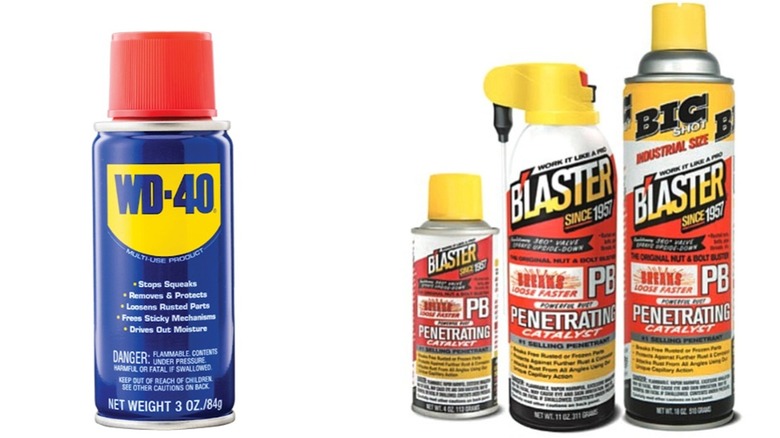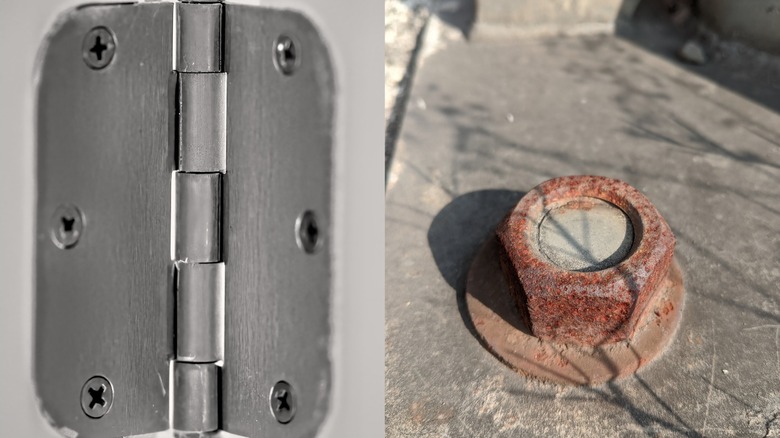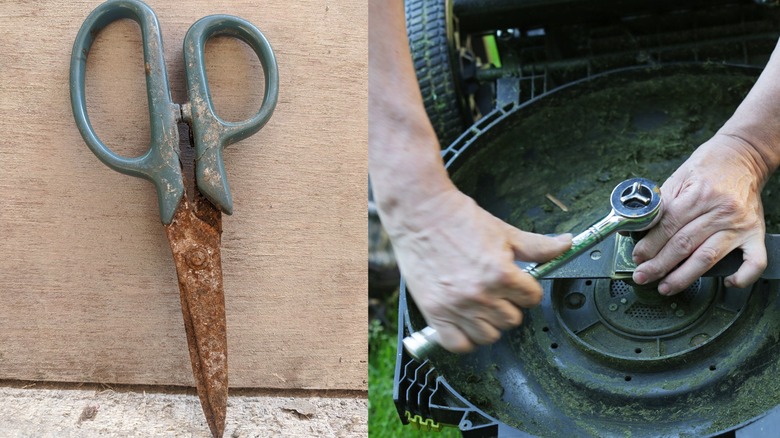WD-40 Vs. PB Blaster: What's The Difference & How To Pick The Right One For Your Needs
Among the go-to items in many households for a variety of tasks is WD-40, which was derived in 1953 by a small chemical company on their 40th attempt to perfect a water displacement formula. By 1993, the spray could be found in 4 out of 5 homes, per WD40.com. Today, there are a number of practical uses for WD-40 around the garage and many WD-40 hacks making our lives easier. But unbeknownst to many, this product may not be the right choice for every application. That's where alternative products like PB Blaster become important.
PB Blaster was also born in the 1950s in the rustbelt of the U.S., which is why perhaps it's no coincidence it possesses a remarkable ability to get rusted fasteners moving again. But with both WD-40 and PB Blaster seemingly offering similar functions, when should you use one versus the other? WD-40 is great at reducing squeaks, removing grease, and even keeping your ATV cleaner after a ride. Conversely, PB Blaster is ideal for undoing frozen nuts and bolts, removing corrosion from pipe threading, and preventing rust in the first place.
WD-40 vs. PB Blaster: different applications
The original use for WD-40 was preventing rust and degreasing the outermost layer of the Atlas Missile. After that, it found many uses within the aerospace world and proved to be a valuable tool for countering and preventing rain and moisture damage. Today, as one proponent put it, "Hinges and wheels and springs are no match for @OriginalWD-40!" In addition to quieting creaky doors, other popular uses include cleaning and preventative care.
PB Blaster, on the other hand, was originally created to solve an issue affecting a mining operation in the humid state of Florida. The mine's sizable machines required routine upkeep in order to continue working at optimum levels, but workers were struggling with removing parts during the course of maintenance. Corrosive buildup due to the mining equipment's metal composition combined with excessive moisture essentially locked fasteners together, so PB Blaster was developed to combat this issue. It's marketed as a penetrant and excels in tough industrial environments, vehicle maintenance, and plumbing applications, where it's primarily used to get stubborn parts un-stuck.
Methodology
As a long-time home owner, I've used both WD-40 and PB Blaster, but for different tasks and for specific reasons. I have used WD-40 inside the house, like spraying loud door hinges and getting older pairs of scissors to open and close properly. It has also come in handy with tools like crescent wrenches, where the adjustable mechanism was stuck.
However, when I was changing out the blades on my lawn mower, the nuts holding the blades on the machine refused to loosen. I liberally applied WD-40 to no avail, and despite having the correct tools and plenty of leverage, the fasteners wouldn't budge. It was then that I tried PB Blaster, and it proved much more capable in terms of helping to loosen the frozen parts. In addition, PB Blaster has successfully unfrozen some of my severely rusted tools, like pliers, which had been absently left outside and suffered through a rainstorm.


